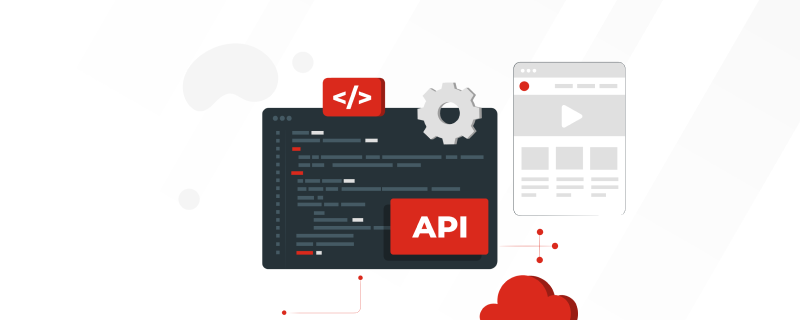
Scaling Applications: Best Practices and Strategies

As your application gains popularity and usage, ensuring it can handle the increased traffic and demand is essential. Scaling your application increases its capacity to handle more users and data. This guide offers tips and best practices for scaling your applications effectively.
Understand Your Application’s Architecture.
Before you can scale your application, it’s essential to understand your architecture deeply. This includes understanding the different components and how they interact and any potential bottlenecks or areas of weakness. Understanding your application’s architecture can help you decide which scaling strategies to implement.
Use Load Balancers to Distribute Traffic.
Load balancers are a vital component of any scaling strategy. They work by distributing incoming traffic across multiple servers, ensuring that no single server becomes overwhelmed and causing the application to slow down or crash. Companies can implement Load balancers at various levels of the application stack, from the network layer to the application layer. When choosing a load balancer, it’s essential to consider factors such as performance, scalability, and ease of configuration. Additionally, it’s necessary to regularly monitor and adjust load balancer settings to ensure optimal performance as traffic patterns change over time.
Here are some examples of wildly used load balancers:
- Amazon Elastic Load Balancer (ELB) is a load balancing service that Amazon Web Services (AWS) can automatically distribute incoming traffic across multiple EC2 instances or containers.
- F5 BIG-IP is a hardware-based load balancer that can handle high traffic levels and provide advanced security features.
- NGINX. A popular open-source web server and load balancer that companies can use at both the network and application layers.
- HAProxy. Another open-source load balancer that teams can use for TCP and HTTP-based applications.
- Citrix ADC is a hardware-based load balancer with advanced features like SSL offloading and application firewalling.
- Microsoft Azure Load Balancer is a load-balancing service offered by Microsoft Azure that can automatically distribute incoming traffic across multiple virtual machines or containers.
- Google Cloud Load Balancing is a load balancing service offered by Google Cloud Platform that can distribute traffic across multiple instances, regions, and backend services.
These are just a few examples of load balancers available in the market. When choosing a load balancer, it’s essential to consider your specific use case, budget, and requirements for scalability and performance.
Implement Caching to Reduce Server Load.
Caching is a technique that can significantly reduce server load and improve application performance. By storing frequently accessed data in memory or on disk, caching reduces the number of requests that need to be processed by the server. This can result in faster response times and lower server load, improving scalability and reducing costs. Many different caching strategies and technologies are available, including in-memory, distributed caching, and content delivery networks (CDNs). When implementing caching, it’s essential to consider factors such as data consistency, cache expiration policies, and cache invalidation strategies.
Use Auto Scaling to Handle Traffic Spikes.
One of the most effective ways to handle sudden spikes in traffic is to use auto-scaling. Auto scaling allows you to automatically adjust the number of instances running your application based on demand. This means that during periods of high traffic, additional instances will be launched to handle the load and then terminated when traffic returns to normal levels. This can help ensure that your application remains responsive and available, even during periods of high demand. When setting up auto-scaling, it’s crucial to consider factors such as instance size, scaling policies, and monitoring and alerting.
Steps to manage traffic spikes
Auto Scaling is a powerful feature that can help your application handle traffic spikes by automatically adding or removing resources based on demand. Here are the steps to use it to manage traffic spikes:
- Create an Auto Scaling Group. An Auto Scaling Group (ASG) is a logical group of instances managed together. You can create an ASG in the AWS Management Console, specify the minimum and maximum number of instances to maintain and set scaling policies that define how the group should scale up or down based on demand.
- Set up a Scaling Policy. A scaling policy defines when and how the ASG should add or remove instances based on the demand. For example, you can set up procedures to scale based on CPU usage, network traffic, and custom metrics.
- Monitor the Scaling. Once you have set up the Auto Scaling Group and scaling policies, you should monitor the scaling behavior to ensure it works as expected. For example, you can use CloudWatch Metrics to monitor the ASG’s performance and view graphs that show how the group is scaling in response to demand.
- Test the Scaling. Before deploying your application to production, testing the scaling behavior to ensure it can handle traffic spikes is essential. For example, you can use load-testing tools to simulate traffic and verify that the Auto Scaling Group adds and removes instances as expected.
- Adjust the Scaling Policies. Over time, you may need to adjust the scaling policies based on changes in traffic patterns or application requirements. Therefore, it is necessary to regularly review the scaling behavior and adapt the policies as needed to ensure optimal performance and cost efficiency.
By following these steps, you can leverage the power of Auto Scaling to handle traffic spikes and ensure that your application can scale dynamically to meet changing demand.
Monitor Your Application’s Performance and Scale Accordingly.
Monitoring your application’s performance is crucial to ensure it can handle its demands. Using tools such as application performance monitoring (APM) and log analysis, you can identify bottlenecks and other issues that may impact your application’s performance. By monitoring your application’s performance and scaling accordingly, you can ensure that it remains responsive and available even as traffic levels fluctuate.
Read more










